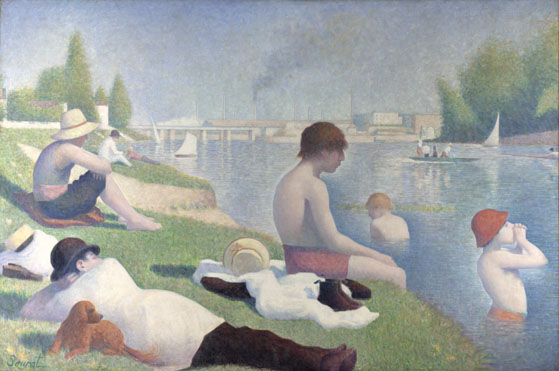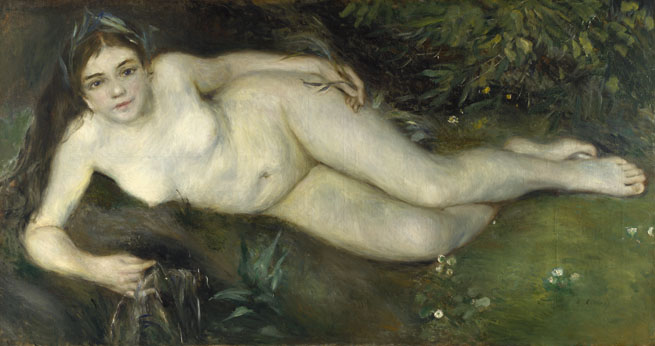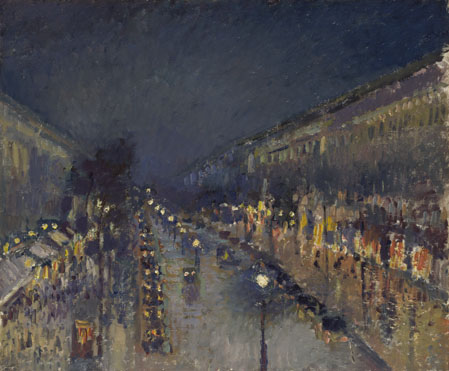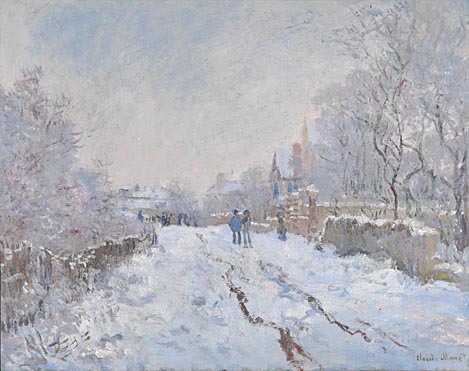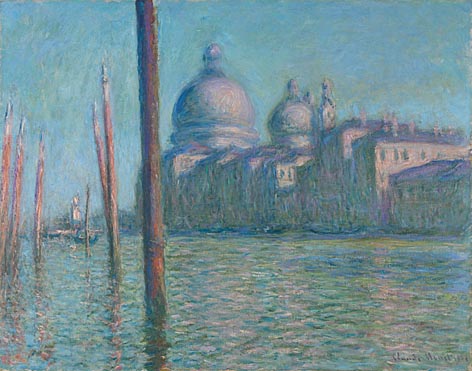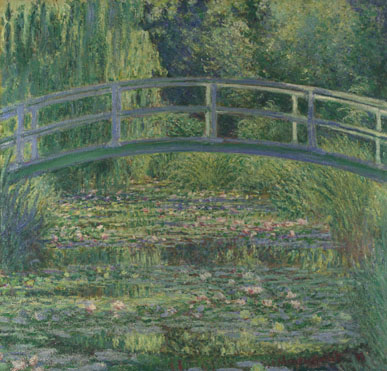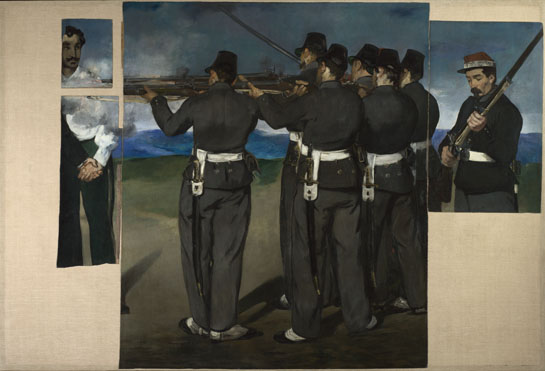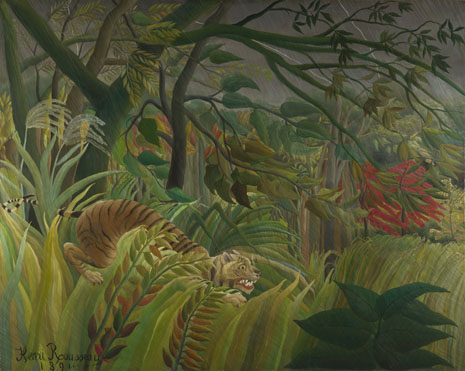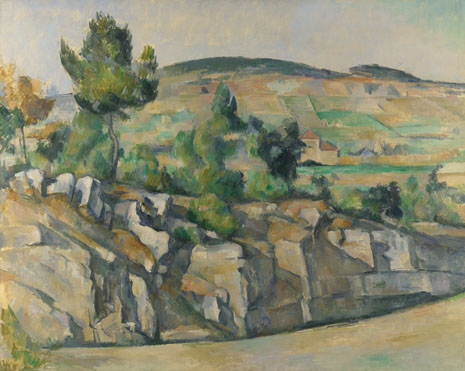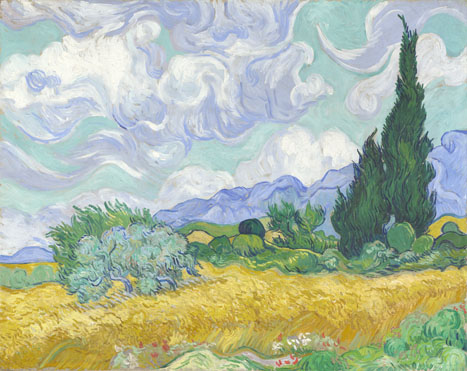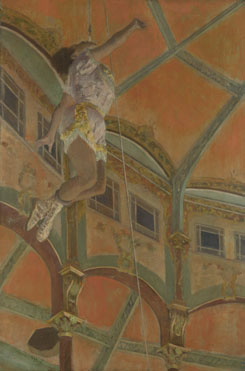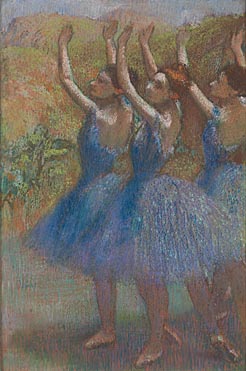Location: Tate Britain, London
For the second visit to the Tate Britain, the emphasis here is on a single room of a gallery. The main entrance room to the Harry and Carol Djanogly Gallery, though unlike the National Gallery, the paintings within this room are of a range of periods.
The room is a large, rectangular gallery, with a high arched ceiling in white, covered in plaster decorations, especially the round flower shapes within square frames. The walls are of a dark grey, which comes as not dull in any regard, but focuses the visitor on the paintings themselves.
The paintings cover a range of centuries of British art, from the late 1500's Elizabethan art, to the late 1800's. The room covers three centuries of art, with some excellent examples of style and the impression of the dress at the times.
Moving to the art itself.
The starting at one of the room, and working his way round, the author made note of some paintings on the basis of how much they had caught his eye.
First was called Portrait of the artist's wife by William Dobson in 1635-40. Eye catching for an entrance, the artist had captured so much detail about his wife, and how she looked through his eyes. She does show as a beautiful woman in it.
Next, An Allebgory of Man by the British school of the 16th century painted this in 1596. A religiously centered piece, it is regarded as a painting of excellent detail, and content, with a prayer on the bottom.
The Portrait of Mary Kytson done in 1590 by the British school again, was chosen as one very good painting of thje style of dress worn by high society.
The Portrait of Sir William Killigrew, was done in 1638 by Anthony van Dyck. Van Dyck's style was noticeably different from the others here, as he had a much softer way of painting, and an eye for setting up interesting features in his backgrounds, such as that of the trees on the side in this painting.
Next is the accurate rendition of Queen Elizabeth I, painted over 1572-5 and attributed to the work of Nicholas Hilliard. This piece is one of the very famous pieces depicting this queen, and this one in particularly was not just exquisite for the details of Elizabeth's features, but also how extravagant Elizabethan dress can truly be.
Moving on, The Dance by William Hogarth, done in 1745, was less detailed compared to many of the neighbouring paintings, but it was a highly dynamic scene of a party, with people socialising and walking around. What was also very noticeable is that it gave an overview of the styles of attire worn in high society parties during the 18th century.
The Portrait of an Unknown Woman by Peter Lely, from 1670-5, was eye-catching on a cruder scale. It showed a beautiful woman staring at the painter, with one bare breast, and an almost inviting expression on her face.
Halfway along, the next piece worth looking at was the Pomeranian bitch and puppy by Thomas Gainsborough in 1777. It makes for a return to the Romantics the author covered at the beginning of this, and is noticeable for the focus on the dogs, with excellent detail, even down to emotive expressions. The background is less detailed, of a more flowing quality.
Next, the Lady Bate-Dudley done in 1787 by Thomas Gainsborough again, remarkable here for the exquisite and elaborate dress worn by the Lady, of white and blue, which contrasts greatly against the dark background.
Moving further, the next is a selection of paintings called Past and Present, a series of three paintings Augustus Leopold Egg in 1858. All three paintings are dark and feature scenes of melancholy and sadness in various forms.
The Lady of Shalott by John William Waterhouse in 1888, is a particularly well known painting, though considered against much of the rest of the collection, it is not that good. What is worth remarking is the expression captured of the Lady in the painting.
Here, two paintings by John Everett Millais, Ophelia (1851-2) and The Boyhood of Raleigh (1870). While in no particular way, these two pictures contrast against each other in colour, the former in green, the latter in a sand and blue colour, but what they both share are exquisitely captured central scenes, with the expressions captured, Ophelia's despair, and Raleigh's childlike curiosity.
While continuing with the next painting, the Monna Vanna, done in 1866 by Dante Gabriel Rossetti. While there has been a growing expression of passion throughout the paintings so far, in this, Rossetti shows great passion in his painting to the point it shows through, even if the painting itself does not contain anything much beyond that of a beautiful woman.
Next, introducing one by William Holman Hunt, the Awakening Conscience from 1853, strikes out as another interesting, and eye catching painting. Though the expressions are captured brilliantly in this, what was particularly noticed was certain details noticed, such as the scene reflected in the mirror.
Ellen Terry as Lady Macbeth, by John Singer Sargeant in 1889, is a large, flowing painting, but shows a great scene of an actress, with her long red hair down the front of her blue and green costume.
Marianna done in 1851 by Millais, another great example of the level of detail put in to the painting.
Now for the last stretch, starting with The Derby Day by William Powell Frith, 1856-8, is a very busy scene now the races, showing a panorama filled with punters. Excellently detailed, and a large painting.
The Rome: St. Peters and the Vatican by Richard Wilson in 1753. This is a spendid and calming scene of room at this time, from a distance. There it shows the Vatican in the distance, surrounded by the hills of Rome, in summery colours.
Last is Colonel Acland and Lord Sydney: The Archers from 1769. This piece by Joshua Reynolds is a very well-centered and dynamic painting, showing a composition the central two characters on a hunting mission. The colours are well used, with darker ones for the background to contrast the pale central figures.
This was very good room for spending a good deal of quality time in exploring a vast range of British art. Covering three centuries in a gallery containing some of the very best of British art, it contains a few famous masterpieces, and is also a very good glimpse in to painting styles and the clothes worn by people throughout this time. Following the list route here was necessary to present a careful selection of some of these paintings. However it is by no means comprehensive, and there is always so much more on offer from the Tate Britain.
Images courtesy of Travel Guide London, and the Tate Britain

















